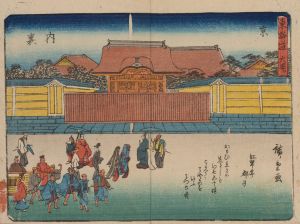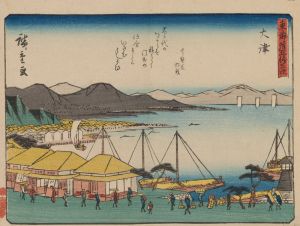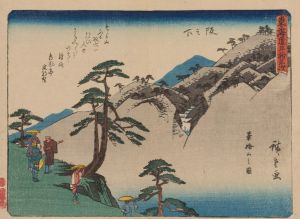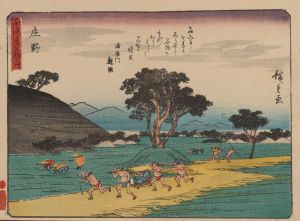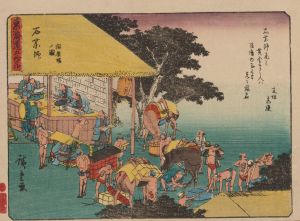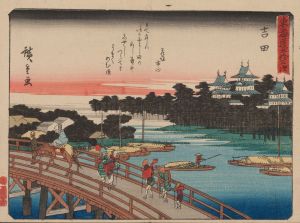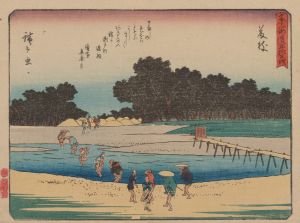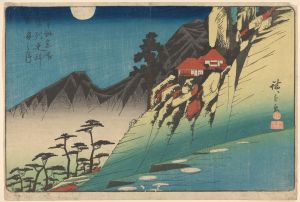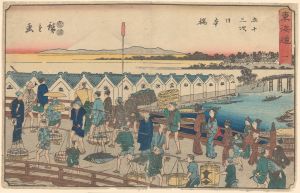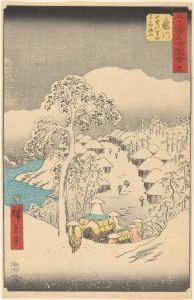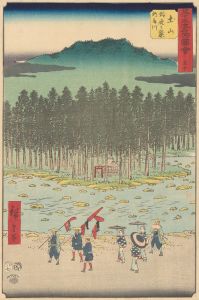
Fuchu
A hand-painted replica of Andō Hiroshige’s masterpiece Fuchu, meticulously crafted by professional artists to capture the true essence of the original. Each piece is created with museum-quality canvas and rare mineral pigments, carefully painted by experienced artists with delicate brushstrokes and rich, layered colors to perfectly recreate the texture of the original artwork. Unlike machine-printed reproductions, this hand-painted version brings the painting to life, infused with the artist’s emotions and skill in every stroke. Whether for personal collection or home decoration, it instantly elevates the artistic atmosphere of any space.
Andō Hiroshige, a renowned Japanese ukiyo-e artist of the Edo period, is celebrated for his landscape prints and depictions of the Tōkaidō road, a vital route connecting Edo (modern-day Tokyo) with Kyoto. One of his most famous series is "The Fifty-three Stations of the Tōkaidō," which illustrates the various post stations along this route. Among these works is the print titled "Fuchu," representing the 19th station of the Tōkaidō.
Hiroshige's "Fuchu" is part of the Hoeido edition of "The Fifty-three Stations of the Tōkaidō," published in the early 1830s. This series is acclaimed for its innovative composition and the way it captures the essence of travel and the landscapes of Japan during the Edo period. The prints in this series are woodblock prints, a traditional Japanese art form that involves carving an image into a block of wood, applying ink, and pressing it onto paper.
The "Fuchu" print, like others in the series, reflects Hiroshige's keen observation of daily life and the natural environment. It typically depicts travelers and local inhabitants engaged in various activities, set against the backdrop of the station's landscape. The scene captures the vibrancy and dynamism of life along the Tōkaidō road, offering insights into the culture and society of the time.
Hiroshige's work is characterized by its use of perspective, color, and composition, which were innovative for the period. His ability to convey atmosphere and mood through subtle gradations of color and meticulous attention to detail is evident in the "Fuchu" print. The use of perspective in his landscapes often draws the viewer's eye into the scene, creating a sense of depth and immersion.
The Tōkaidō road itself was a crucial artery for commerce, travel, and communication during the Edo period. It facilitated the movement of people and goods between the political center of Edo and the imperial capital of Kyoto. The post stations, such as Fuchu, provided essential services to travelers, including lodging, food, and stables for horses. Hiroshige's depiction of these stations offers a glimpse into the infrastructure and social dynamics of the time.
Hiroshige's "Fuchu" and the entire Tōkaidō series have had a lasting impact on both Japanese and Western art. His work influenced the Impressionists and other Western artists in the 19th century, who admired his compositions and use of color. Today, Hiroshige's prints are celebrated for their artistic merit and historical significance, providing a window into the Edo period's cultural and social landscape.
In summary, Andō Hiroshige's "Fuchu" is a masterful representation of one of the Tōkaidō's post stations, capturing the essence of travel and daily life in Edo-period Japan. Through his innovative use of composition and color, Hiroshige offers a vivid portrayal of the landscapes and people that defined this important historical route.





